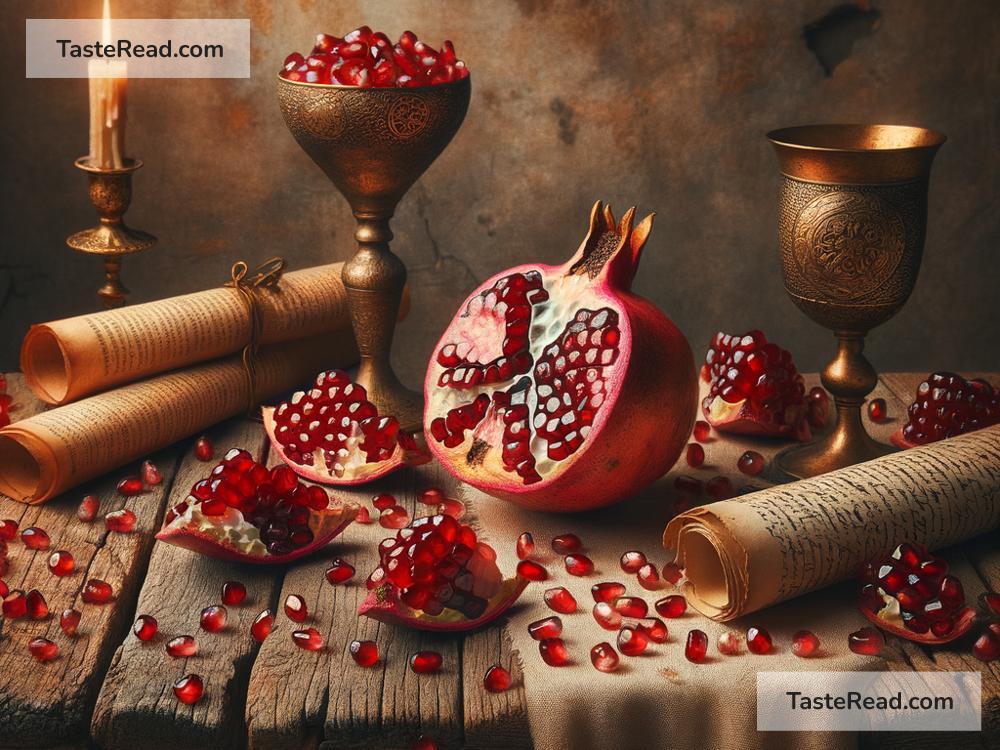The Ancient Symbolism of Pomegranates in Mythology
The pomegranate is an amazing fruit that has been loved for thousands of years. With its tough outer skin and juicy red seeds inside, it’s not just a tasty treat—it’s a symbol of deep meaning in many ancient cultures and myths. Throughout history, people have associated the pomegranate with life, death, love, and even the universe itself.
A Fruit Full of Meaning
The pomegranate has a unique appearance. When you open it, dozens of bright red seeds spill out, almost like jewels hidden inside. Because of this, ancient people often thought of the pomegranate as a symbol of abundance and fertility. Its seeds represented life, growth, and the promise of the future. For cultures that relied on crops and harvests to survive, this fruit was seen as a sign of plenty and prosperity.
But the pomegranate isn’t just about life; it also has ties to mystery, death, and rebirth. Its vibrant color, enclosed in a hidden shell, made it feel magical to those who believed everything in nature carried a deeper meaning.
Greek Mythology: The Tale of Persephone
One of the most famous stories involving the pomegranate comes from Greek mythology. It’s connected to Persephone, the daughter of Demeter (goddess of agriculture). In the myth, Hades, the god of the underworld, falls in love with Persephone and takes her to his dark realm. Grieving and heartbroken, her mother Demeter stops plants from growing, causing famine on Earth.
The story takes a twist when Persephone eats pomegranate seeds while in the underworld. Depending on the version of the myth, she eats either six or four seeds. Because she consumes food from the land of the dead, she becomes tied to the underworld forever. A compromise is reached: each year, Persephone must spend part of the year with Hades and the rest of her time with her mother above ground.
This myth explains the changing seasons. When Persephone is in the underworld, Demeter mourns, and plants stop growing—this is winter. When Persephone returns, her mother rejoices, bringing life back to the earth—this is spring and summer.
In this story, the pomegranate symbolizes death and rebirth, but also balance. It reminds us that even in darkness, there is a promise of return and renewal.
Ancient Egypt: A Sign of the Afterlife
The ancient Egyptians also valued pomegranates, especially in their beliefs about life after death. Pomegranates were often placed in tombs as offerings for the souls of the deceased. They believed this fruit could help the dead on their journey to the afterlife. Its many seeds represented eternal life and the endless cycle of existence.
The pomegranate wasn’t just seen as food—it carried a spiritual meaning that connected the living and the dead. Egyptians thought that just as the seeds could multiply, life itself could continue after death.
Judaism: A Symbol of Righteousness
In Jewish tradition, the pomegranate is considered special and sacred. It appears in the Bible and is one of the seven species of fruits native to the land of Israel. Pomegranates were even used as decorations in the ancient Temple of Solomon.
Jewish teachings say that the pomegranate is full of seeds—traditionally believed to be 613 seeds, though this isn’t scientifically accurate. This number corresponds to the 613 commandments (mitzvot) found in Jewish law. For this reason, the pomegranate became a symbol of righteousness and moral living.
Even today, pomegranates are often eaten during holidays like Rosh Hashanah, the Jewish New Year. People hope for a year of blessings and goodness, just as a pomegranate is full of abundant seeds.
Persian Culture: Love and Unity
In Persian (Iranian) culture, the pomegranate is closely tied to love, marriage, and unity. Its red color and juicy interior remind people of passion and beauty. During weddings, pomegranates are included in decorations and ceremonies as a wish for a happy and fruitful life together.
Persians also celebrate the fruit during Yalda Night, an ancient festival marking the longest night of the year. Eating pomegranates during this time symbolizes hope and the triumph of light over darkness.
Hinduism and Buddhism: A Sacred Fruit
In Hinduism and Buddhism, the pomegranate is seen as sacred. It is often offered to gods and used in rituals. In Hindu mythology, it represents fertility and prosperity, much like in other cultures. In Buddhism, the pomegranate symbolizes health and longevity, making it an important part of ceremonies and traditions.
A Universal Symbol
The pomegranate’s symbolism spans across many cultures and religions. While its meanings differ slightly, common themes emerge: life, fertility, love, death, and renewal. Ancient people looked at the natural world and saw deep lessons in the things around them—and the pomegranate, with its mysterious and beautiful nature, offered plenty to think about.
What We Can Learn Today
The pomegranate teaches us that life is complex and full of opposites: growth and decay, joy and sorrow, beginnings and endings. Its story reminds us that even in difficult times, there is beauty to be found and cycles that promise renewal.
If you ever get the chance to eat a pomegranate, take a moment to think about its rich history and the people who gave it such deep meaning. This humble fruit has traveled through time, carrying with it lessons from the ancient world—lessons we can still appreciate today.


